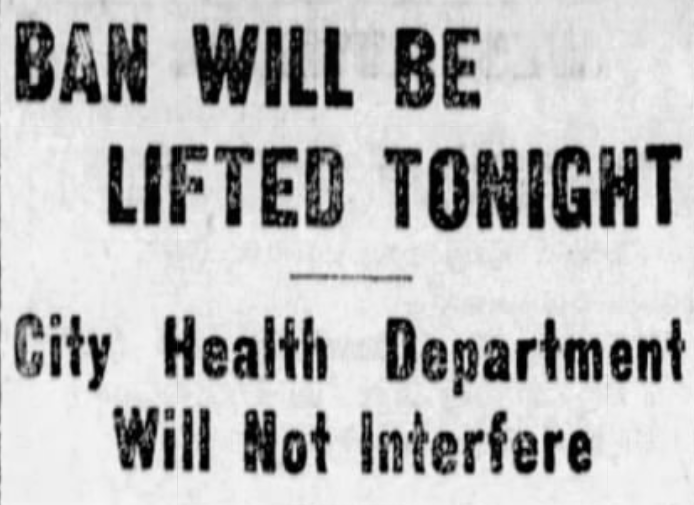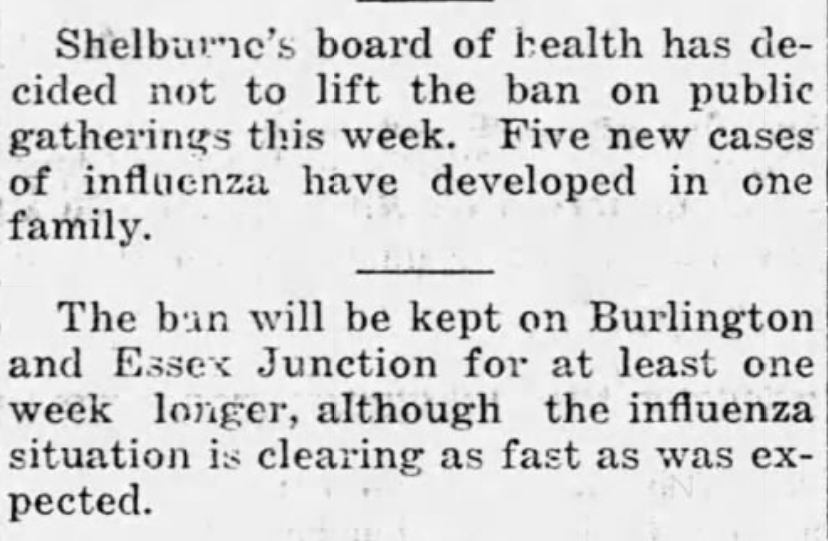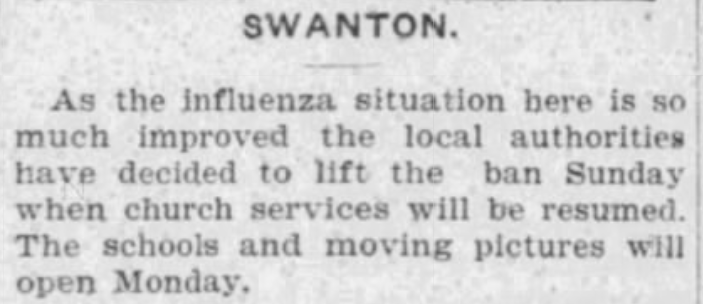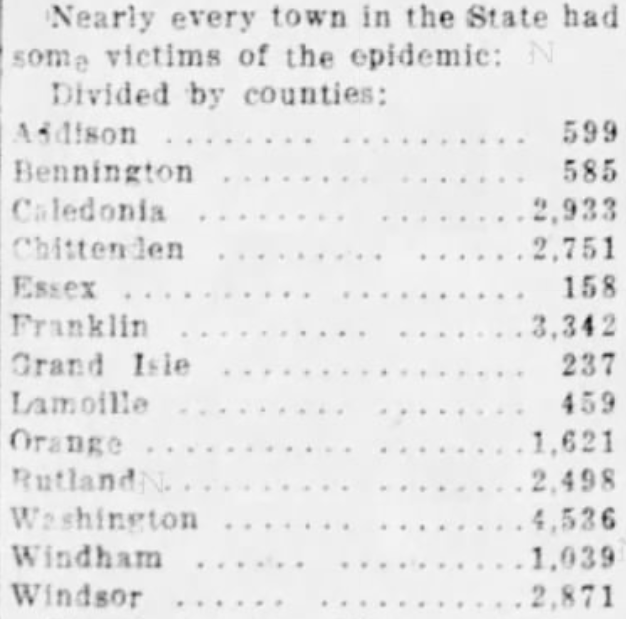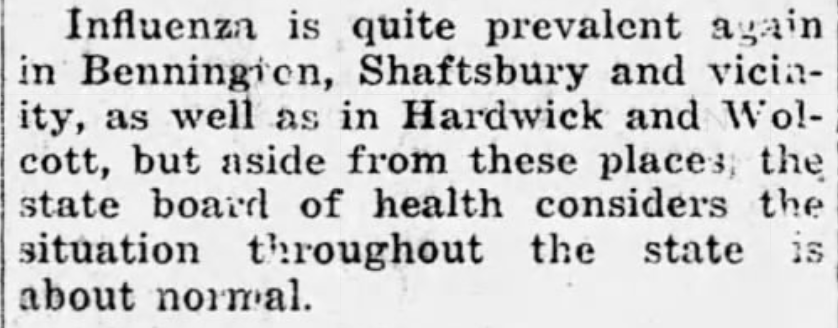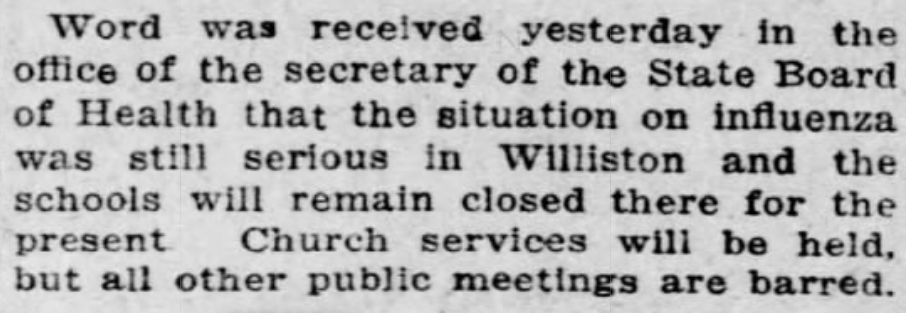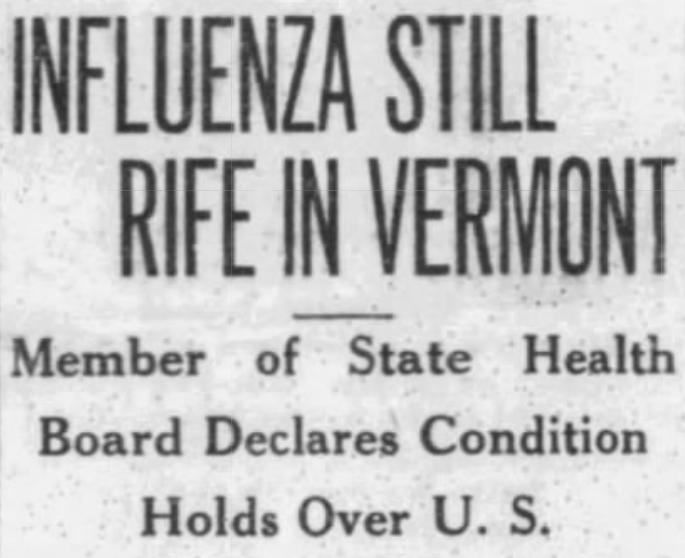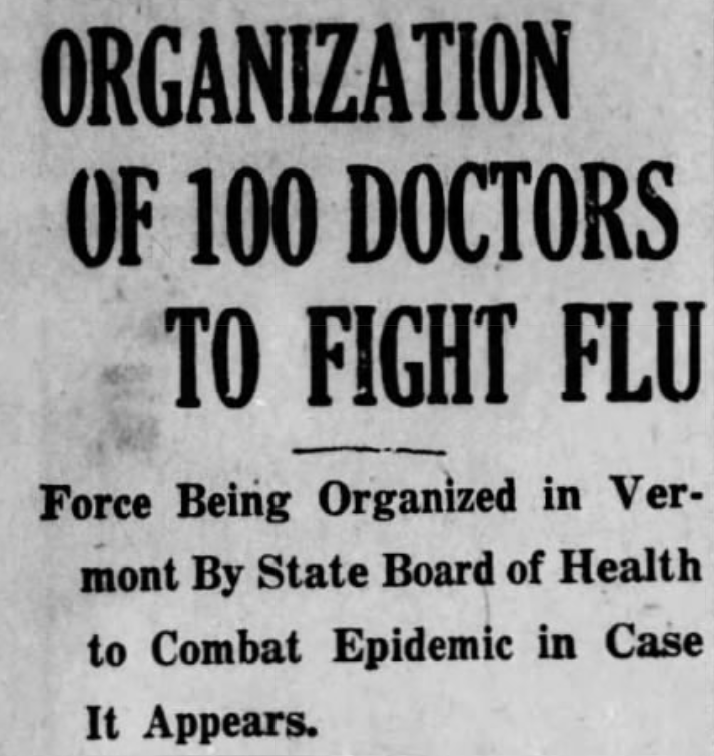At 10 pm this evening, @GovPhilScott's updated Executive Order placing limitations on social gatherings to help stop the spread of #COVID19 goes into effect. During the #Pandemic of 1918, bans on gatherings began in earnest in early October and they worked when/where followed.
Barre initiates a minimum one week ban on public gatherings, including "entertainments of every kind."
(source: @BFP_news, October 1, 1918)
(source: @BFP_news, October 1, 1918)
With 12 homes newly under quarantine, 14 new cases, and one additional death, Brattleboro's Health Officer Henry Tucker proposes order to extend ban on public gatherings & requests more mattresses & cots for emergency hospital.
(source: @BrattReformer, October 3, 1918)
(source: @BrattReformer, October 3, 1918)
Considered the most drastic measure ever taken by the Vermont State Health Board in its history, a statewide ban on all gatherings is enacted, closing virtually all public establishments.
(source: @RutlandHerald, October 5, 1918)
(source: @RutlandHerald, October 5, 1918)
One week after imposing a statewide ban on all gatherings, State Board of Health reports declining cases of influenza in many areas of Vermont.
(source: @BrattReformer, October 11, 1918)
(source: @BrattReformer, October 11, 1918)
But some towns, particularly Rutland, continued to allow their bars to operate despite the ban, which lead to increased cases.
(source: @RutlandHerald, October 12, 1918)
(source: @RutlandHerald, October 12, 1918)
Despite spikes in some areas, Dr. Dalton of the State Board of Health reports that he believes "the crest of the disease has been reached" but that it is important to continue with the ban for at least one more week.
(source: Barre Daily Times, October 15, 1918)
(source: Barre Daily Times, October 15, 1918)
Barre reports its fewest number deaths in three weeks, crediting the ban on public gatherings which is anticipated to be continued by the State Board of Health for at least 10 more days to "rid Barre finally of the malady."
(source: Barre Daily Times, October 17, 1918)
(source: Barre Daily Times, October 17, 1918)
Middlebury reports new cases as "almost negligible in comparison with the number last week."
(source: Middlebury Register, October 18, 1918)
(source: Middlebury Register, October 18, 1918)
By October 21, less than three weeks after statewide ban on public gatherings was ordered and one month after several individual town bans were initiated, State Board of Health states that it will begin considering lifting the ban.
(source: @RutlandHerald, October 21, 1918)
(source: @RutlandHerald, October 21, 1918)
At its October 22 meeting, State Board of Health continues the statewide ban on gatherings until at least Sunday, November 3 as a "preventative measure against the further spread of influenza" but says some towns may need to go longer.
(source: @bfp_news, October 23, 1918)
(source: @bfp_news, October 23, 1918)
Following the State Board's announcement that the statewide ban on public gatherings is extended until at least November 3, some areas see slight upticks in new cases.
(source: @BrattReformer, October 23, 1918)
(source: @BrattReformer, October 23, 1918)
As Vermont gets closer to the anticipated date of November 3, when the statewide ban may be lifted, some areas continue to see slight upticks in new cases and State Board of Health warns that ban may be longer.
(source: @BrattReformer, October 25, 1918)
(source: @BrattReformer, October 25, 1918)
By October 31, a Thursday, anticipation grows of the pending lift of the statewide ban on public gatherings and the reopening of churches, lodges and other establishments on Sunday.
(source: The Enterprise and Vermonter, October 31, 1918)
(source: The Enterprise and Vermonter, October 31, 1918)
And emergency hospitals that opened at the start of the influenza #pandemic begin to close.
(source: The Springfield Reporter, October 31, 1918)
(source: The Springfield Reporter, October 31, 1918)
"Not withstanding the inconvenience and hindrance [by the order closing] all public gatherings, the citizens have responded loyally and it is to this observance of the order that we owe the speedy control of the plague."
(source: @RutlandHerald, November 2, 1918)
(source: @RutlandHerald, November 2, 1918)
Effective Sunday, November 3, 1918, the statewide ban on public gatherings would be lifted but local health officials can continue with a local ban if needed.
(source: The @RutlandHerald, November 2, 1918)
(source: The @RutlandHerald, November 2, 1918)
Local health officials continue to monitor cases in their towns and while many towns reopen on November 3, some do not.
(source: The @TimesArgus, November 5, 1918)
(source: The @TimesArgus, November 5, 1918)
Within Chittenden County, bans on public gatherings remain in Burlington, Essex Junction, and Shelburne.
(source: The @Calrecord, November 7, 1918)
(source: The @Calrecord, November 7, 1918)
But improvements lead to quick lifts of bans on public gatherings after the initial statewide ban is discontinued on November 3.
(source: The @SAMessenger, November 8, 1918)
(source: The @SAMessenger, November 8, 1918)
Washington County is reported as "hardest hit" by the influenza #pandemic.
(source: The Burlington Suburban, November 14, 1918)
(source: The Burlington Suburban, November 14, 1918)
But by late November, even with some increased cases of influenza in isolated towns, the State Board of Health declares the situation across the state as "about normal."
(source: @Calrecord, November 25, 1918)
(source: @Calrecord, November 25, 1918)
"Serious" clusters remain in parts of the state for the rest of 1918, but are they are considered controllable.
(source: @bfp_news, December 7, 1918)
(source: @bfp_news, December 7, 1918)
The "tail" of the #pandemic surges in parts of the United States, causing State Board of Health to remind Vermonters to "keep to themselves as much as possible" and reduce "visiting to a minimum."
(source: @SAMessenger, December 17, 1918)
(source: @SAMessenger, December 17, 1918)
Commonly referred to as the "October epidemic" in Vermont, the influenza pandemic of 1918 carried into 1919 but was largely over by summer. The State Board of Health mobilized in the fall of 1919 but cases that fall & winter were average.
(source: @bfp_news, September 23, 1919)
(source: @bfp_news, September 23, 1919)

 Read on Twitter
Read on Twitter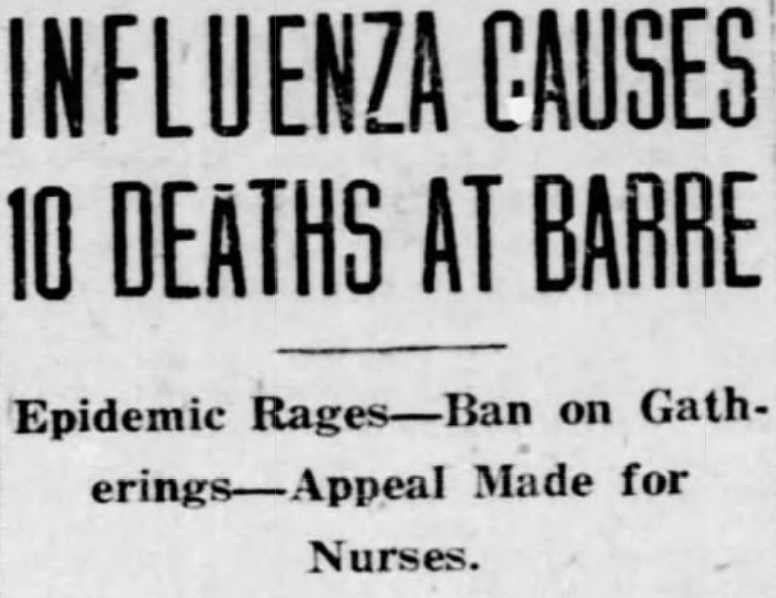
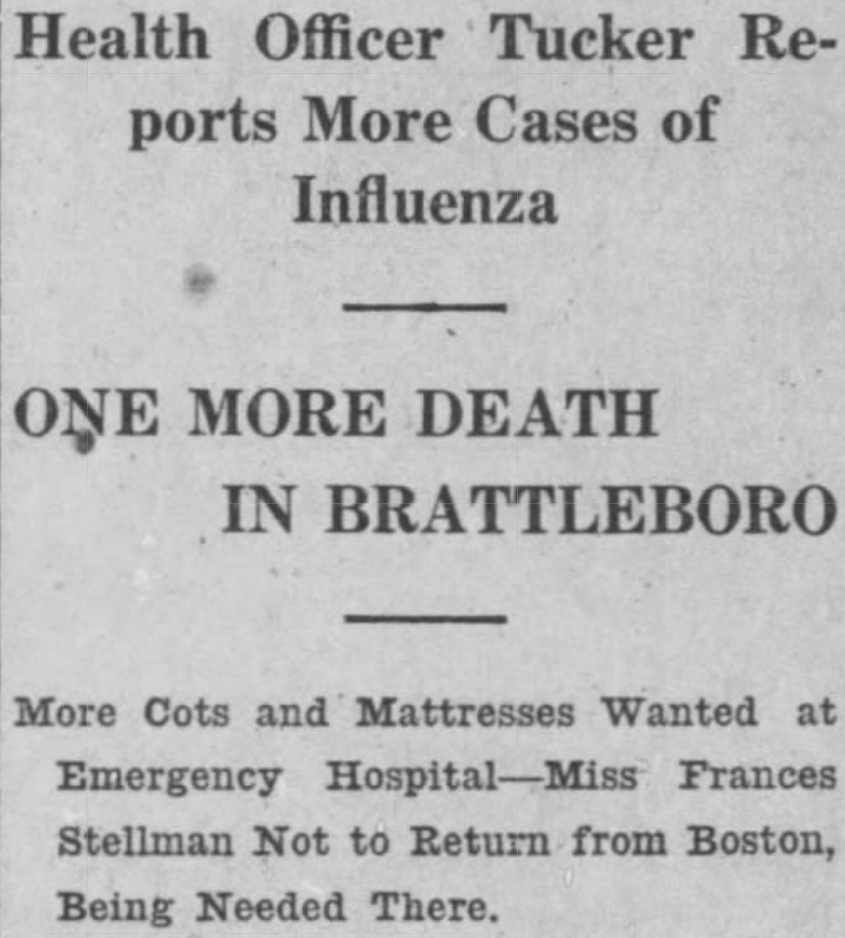
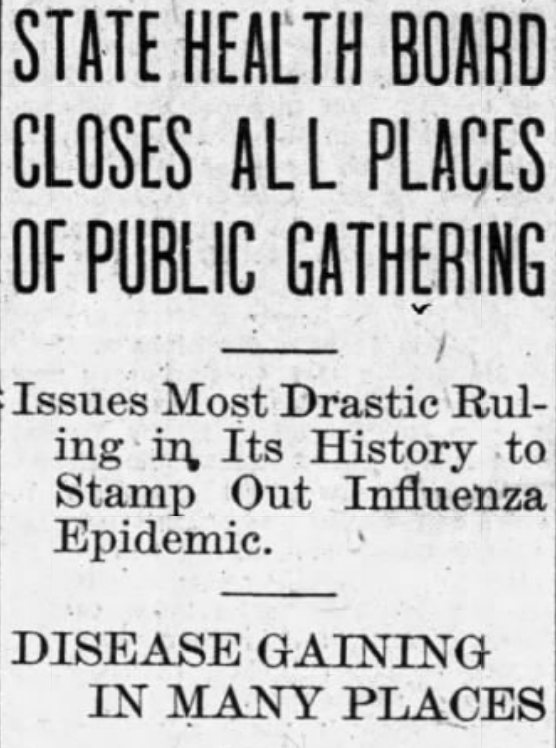
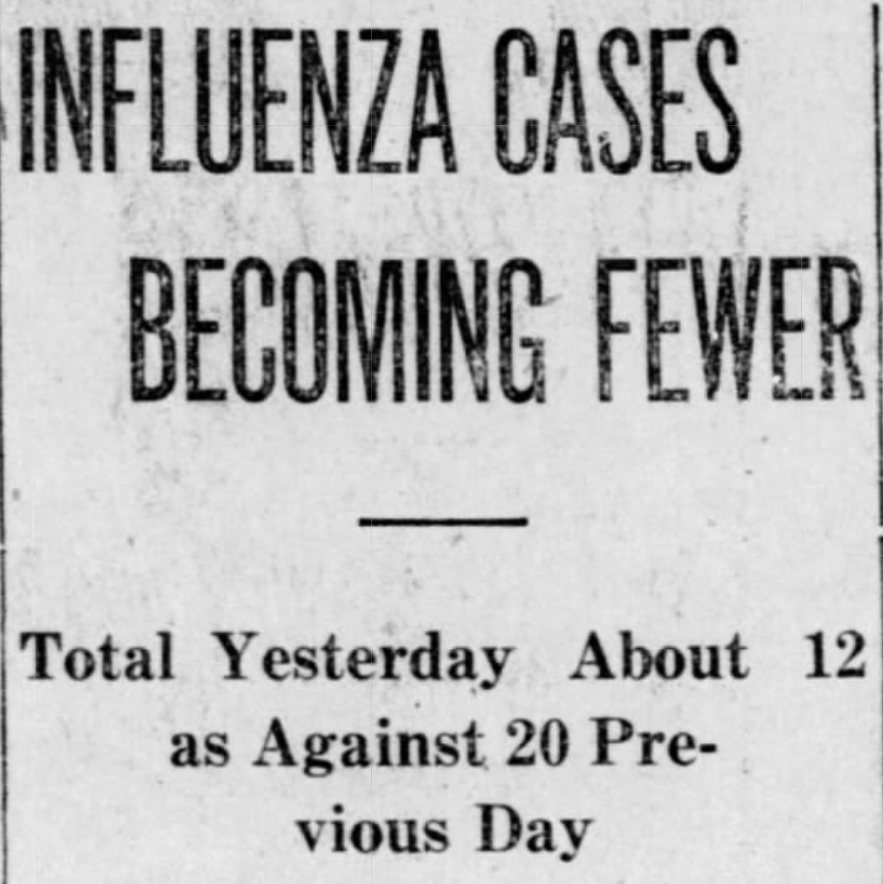
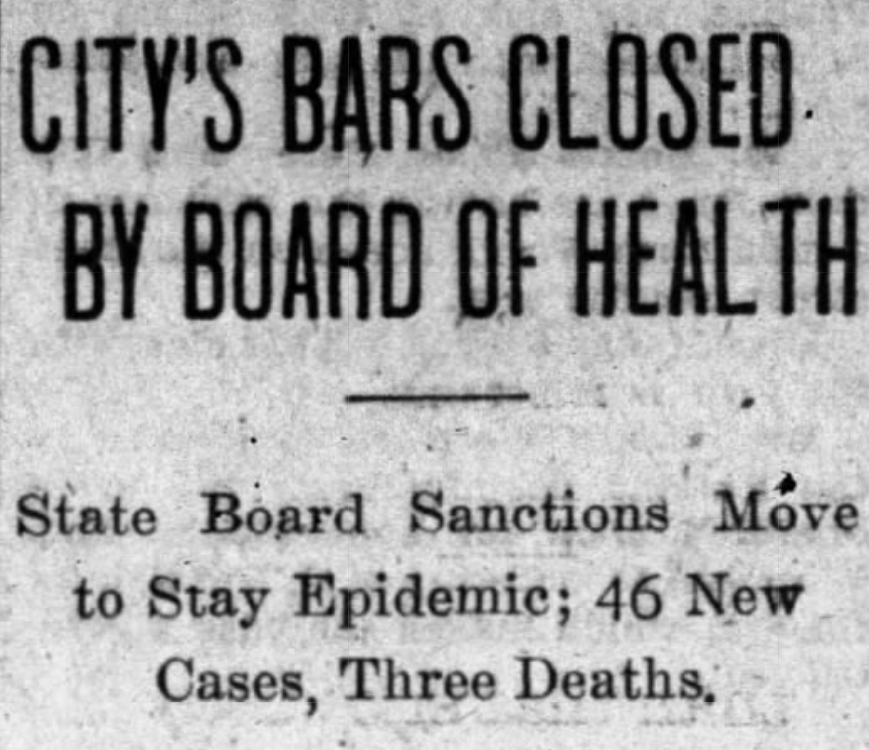
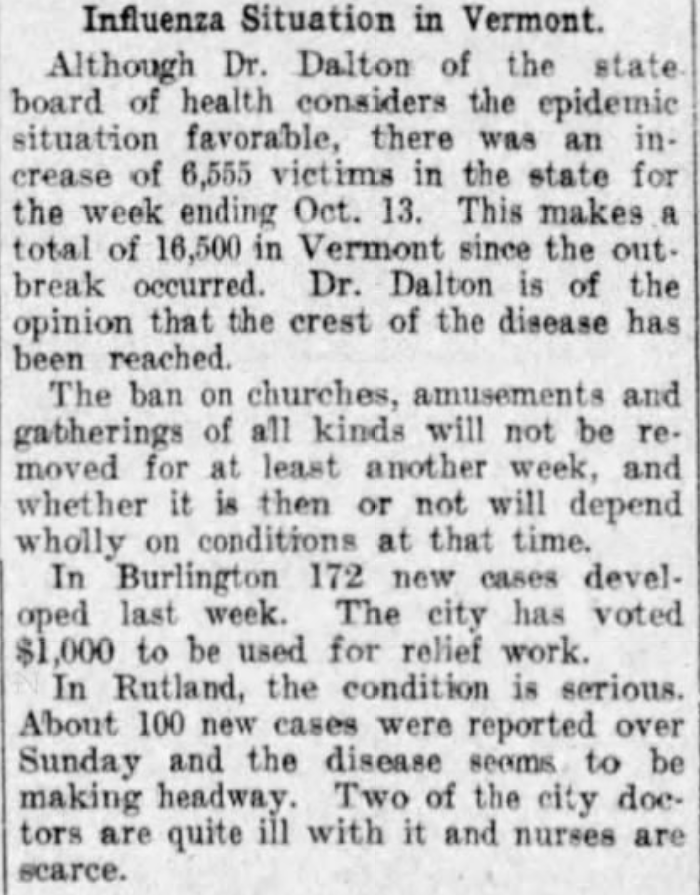

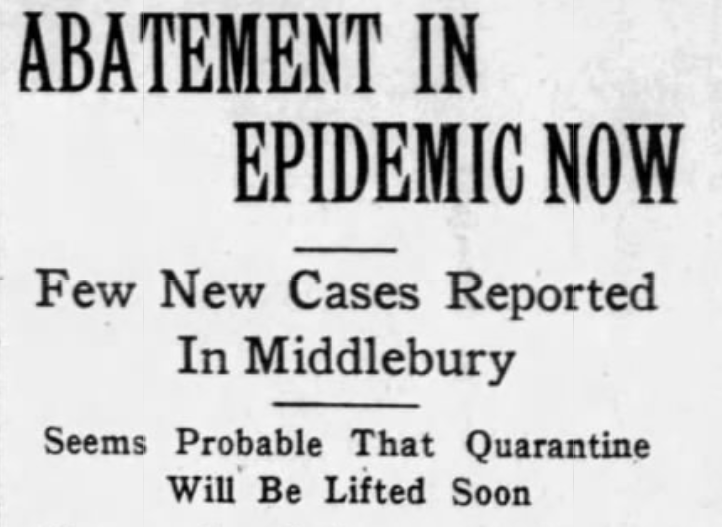
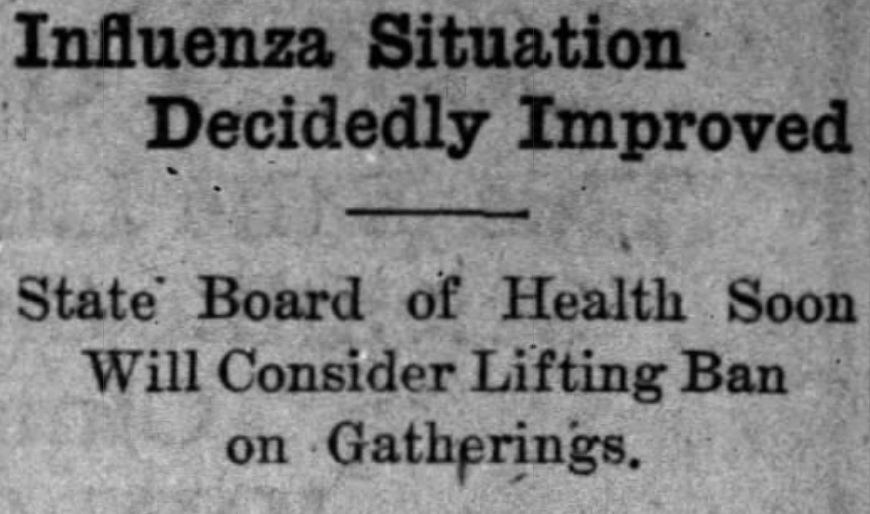
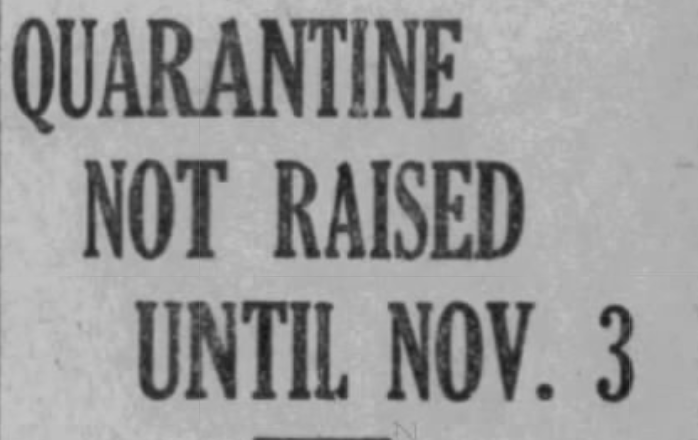
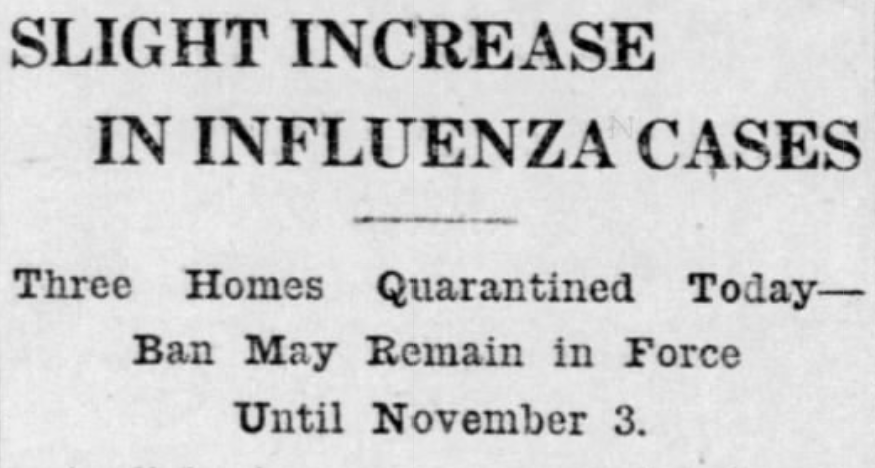



!["Not withstanding the inconvenience and hindrance [by the order closing] all public gatherings, the citizens have responded loyally and it is to this observance of the order that we owe the speedy control of the plague."(source: @RutlandHerald, November 2, 1918) "Not withstanding the inconvenience and hindrance [by the order closing] all public gatherings, the citizens have responded loyally and it is to this observance of the order that we owe the speedy control of the plague."(source: @RutlandHerald, November 2, 1918)](https://pbs.twimg.com/media/Emz9YPWW8AAXPWV.png)
